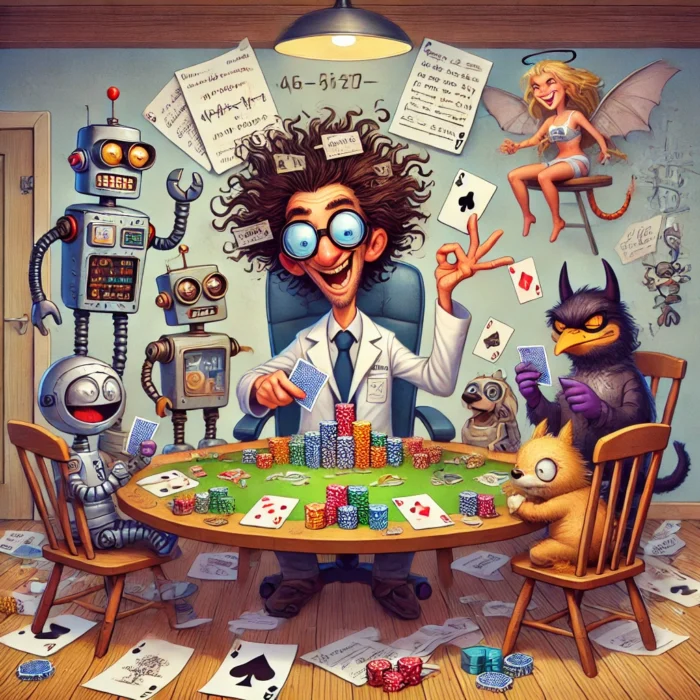So, I am an Artificial Intelligence enthusiast. Of course, developing AI that plays poker means—more than once—you are banking into some of the deeper philosophical questions of our time. Not about the meaning of life or if pineapple belongs on pizza—it does, by the way—but actually something a bit more important: the nature of poker and how to model it for a bot.
First off, let’s break down poker. Obviously, it’s a game. To a bot engineer, however, poker is all about systems—systems of rules and interactions. Poker doesn’t represent cards or chips but the players. And it really doesn’t make much sense to have a poker game without a player, much like having a computer and never putting it on the Internet.
It’s a blend of game situation, history by opponents, own mood—and the phase of the moon. Yes, some players are that superstitious. And that is exactly what makes modeling a poker player interesting and challenging—the mix of logical and illogical.
The comforting thought, in all of this, for engineers is that poker really does represent a finite number of states. Every player begins with some chips; there’s only so many cards are in the deck; at any time during a game, the number of possible moves is limited. It’s a godsend when trying to model a game. The idea of trying to model an infinite—it’s like trying to find the end of the internet.
Now, this is where it gets interesting. Players don’t do the same action in the same situation all of the time. They mix up their choice: make decisions like “I’ll fold 45 percent of the time and call 55 percent of the time.” It’s this randomness that your poker bot has to emulate since in poker, when you become predictable, you’re dead.
But that brings up a difficult-sounding concept: If players can make mixed moves, that must mean I have to model an infinity of possibilities. Thankfully no. While it sounds daunting, it’s really an issue of accuracy. As I take small changes in a player’s mixed strategy, I get small changes in expected profit to that player. It’s not about modeling infinity here, but how much reality one can cope with without going nuts.
Now, let us take a look at some strategies that make things simpler. Whether a player’s head is full of brains, sawdust, or algorithms, their strategy can always be reduced to being representable by a Look-Up Table of decisions. That is, the table says what to do given any situation. Now, when several players with their LUTs sit at the table, this goes down into an increasingly exciting strategic interplay with expected profit.
The temptation of infinity had mixed moves. Let us kill this myth at once. Imagine planning to play an infinite number of hands. It is just impractical. We think in terms of finite sessions and look at the expeeCTed profit over these sessions.
Consider, if you call, profit may be $40, and in case you fold, it could be -$10. Mixing your move leads to profit calculation, like: 0.4 * $40 + 0.6 * -$10 = $10. Small changes in these mixed strategies will alter expected profit only slightly, proving it about precision, but definitely not infinity.
To drive the point home, let’s consider some practical examples. Suppose, for example, that you sit down at the table behind a stack of $665. You are against a superstitious opponent who always folds when he sees the number 666. Suddenly, what had, to this point, seemed to you perhaps like a small difference in your stack size may very well make a huge difference in your expected profit. It’s those kinds of quirky little details that make poker so fascinating and maddening all at once.
There you go. Modeling a poker bot includes finiteness of the game, introducing randomness into mixed moves, and simplification of strategies into something our bots can handle. A mix of philosophy, math, and a dash of humor is added.
